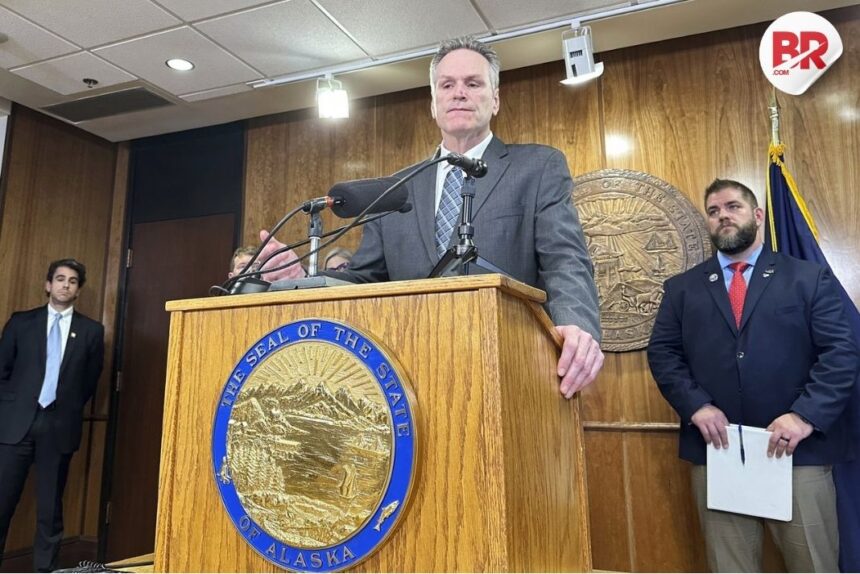
Alaska’s budget is facing a lot of uncertainty because of falling oil prices and changing federal policies, including tariffs.
After President Trump returned to office, Alaska’s Republican Governor Mike Dunleavy was hopeful. He said it felt like “Christmas every day” because Trump supports energy projects like oil and gas drilling. Alaska’s economy depends heavily on oil, so any support for the oil industry is seen as good news.

But in the past three months, things haven’t gone smoothly. Trump’s changing tariff policies and the recent drop in oil prices have caused major concerns for Alaska lawmakers. They rely heavily on federal funding and oil revenue to create the Alaska budget each year.
Oil prices are very unpredictable. A year ago, North Slope oil was about $90 per barrel. Now it’s around $65–$70. Since Alaska earns about $35–$40 million for every $1 change in oil price, this drop hurts state income badly.
The state’s latest budget plan was based on oil being $68 a barrel, which is already lower than expected. If oil prices drop more, the budget gap will grow.
Also Read: Big Jump! Rupee Gets Stronger as US Pauses Tariffs – What You Need to Know
Gov. Dunleavy supports more oil and gas drilling, mining, and logging to help increase revenue. He also proposed giving residents a $3,800 dividend from the state’s oil-wealth fund. But this would cost $2.5 billion — two-thirds of the fund’s earnings for the year — and create a large budget deficit.
Lawmakers disagree with Dunleavy’s plan. Many want to use the money to support public services like education and health care, which are struggling with rising costs. They also want to fix old school buildings that are in poor condition.
Alaska has a special oil-wealth fund that collects money from oil profits. Its main amount is protected, but earnings can be used for government services and yearly payments (called dividends) to residents. Lawmakers have been using part of this money for state services since 2018, which has caused debates on how much should go to dividends versus services.
Last year, residents got $1,702 as a combined dividend and energy payment. Over the past five years, dividend payments have ranged from $992 to $3,284.
Many lawmakers believe the state can’t afford a $3,800 dividend. House Majority Leader Chuck Kopp said it gives people false hope and hides the real budget problems. He said the state needs to either raise more money through taxes or reduce the dividend to balance the Alaska budget.
Some lawmakers in the Senate have suggested raising oil taxes to bring in more money, but there hasn’t been strong support for that idea.
In short, Alaska’s future finances remain uncertain. The state depends on oil prices and federal decisions, both of which are unpredictable right now. Lawmakers must figure out how to manage the Alaska budget with limited income and growing needs.












